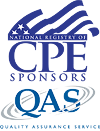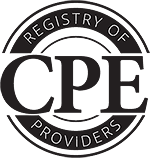Fixed assets (tangible assets) can be one of the largest asset groups within an organization and properly accounting for the assets, their maintenance, and disposal are critical for any business. Accounting rules for fixed assets address capitalization, asset retirement obligations, depreciation, impairment, and disposal. Fixed assets are not held for resale but for the production, supply, rental or administrative purposes. Assets that are held for resale must be accounted for as inventory rather than fixed assets. Other important components involve record keeping, controls, policies and procedures, measurements, asset tracking, and auditing procedures.
Inventory is anything the company stores. In a retail context, inventory refers to your raw material as well as the stock of finished goods or products that you sell. It is measured in units of stock as well as the value of the stock you hold. In the manufacturing industry, inventory is divided into three major types:
- Raw material: All material that will be used to produce a product
- Work-in-progress/process: Parts manufactured but not yet assembled.
- Finished product: Assembled product that that is ready for a sale. A typical retailer only holds this type of inventory.
Inventory Management is the science of purchasing, supervising, controlling and dispensing stock for sale stored in a facility. It covers all aspects of stock management across the supply chain from the manufacturer to the point of sale manned by the retailer. The process of inventory management begins with the initiation of a PO and ends when an order is fulfilled/ delivered.
This session will focus on important concepts bookkeepers should be prepared to manage/understand in relation to all the components of inventory and fixed assets. We will review concepts of fixed assets such as: depreciation, capitalization, disposal, inventory including the methods of managing and counting inventory as well as recordkeeping.
NOTE: This course is one of a series of courses developed for the Professional Bookkeeping Certificationprogram on Illumeo. The full curriculum of courses will provide you with the ultimate foundation for a career as a bookkeeper.
Note: Information within this course comes from readily available public domain documents and is utilized by the trainer as a supplement for relaying the course content.
Prerequisites
No Advanced Preparation or Prerequisites are needed for this course. However, it is recommended to take the other courses in the series prior to completing this one.
Learning Objective
- Explore the definition of fixed assets.
- Discover the capitalization of fixed asset costs.
- Discover the various methods and types of depreciation for fixed assets.
- Explore requirements for asset retirement.
- Explore the definition of inventory and inventory key terms.
- Explore the inventory process and inventory tracking.
- Explore inventory management techniques.
- Identify inventory count methods.
Last updated/reviewed: July 23, 2025



Ask the instructor a question about this lesson